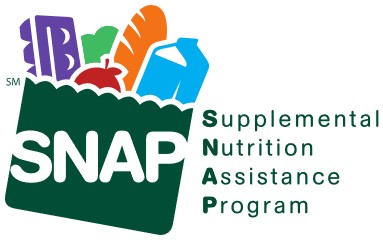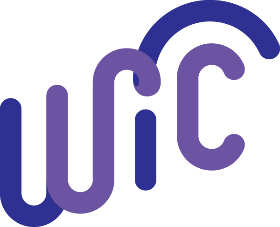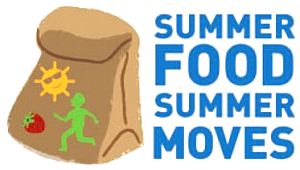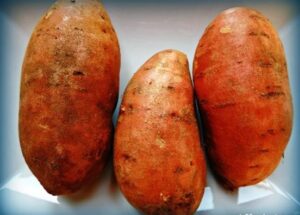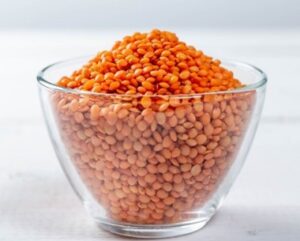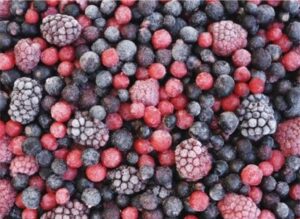Saving Money on Food
S.N.A.P. | WIC | SCHOOL LUNCH | COMMUNITY PROGRAMS | EAT SMART
About S.N.A.P.
If you can’t afford to buy the healthy foods you need, try the Supplemental Nutrition Assistance Program (SNAP). People using SNAP get grocery money every month on an EBT (Electronic Benefits Transfer) card, which is like a debit card. They use the EBT card to buy food at local stores or farmers’ markets. How much money they get depends on their income and family size.
More than 259,000 people in Iowa, 8% of the population (1 in 12), use SNAP, according to the Center of Budget and Policy Priorities.
Two thirds of them are families with children. More than 50% are working families. The average value of food money per person is $170 a month, but many get less.
With SNAP, families can get almost any kind of food at supermarkets or farmers markets. Families that grow their own vegetables can use SNAP to get plants and seeds. SNAP cannot be used to buy alcohol, cigarettes, medicine, vitamins, pet food, paper goods, or cleaning products.
Who is Eligible?
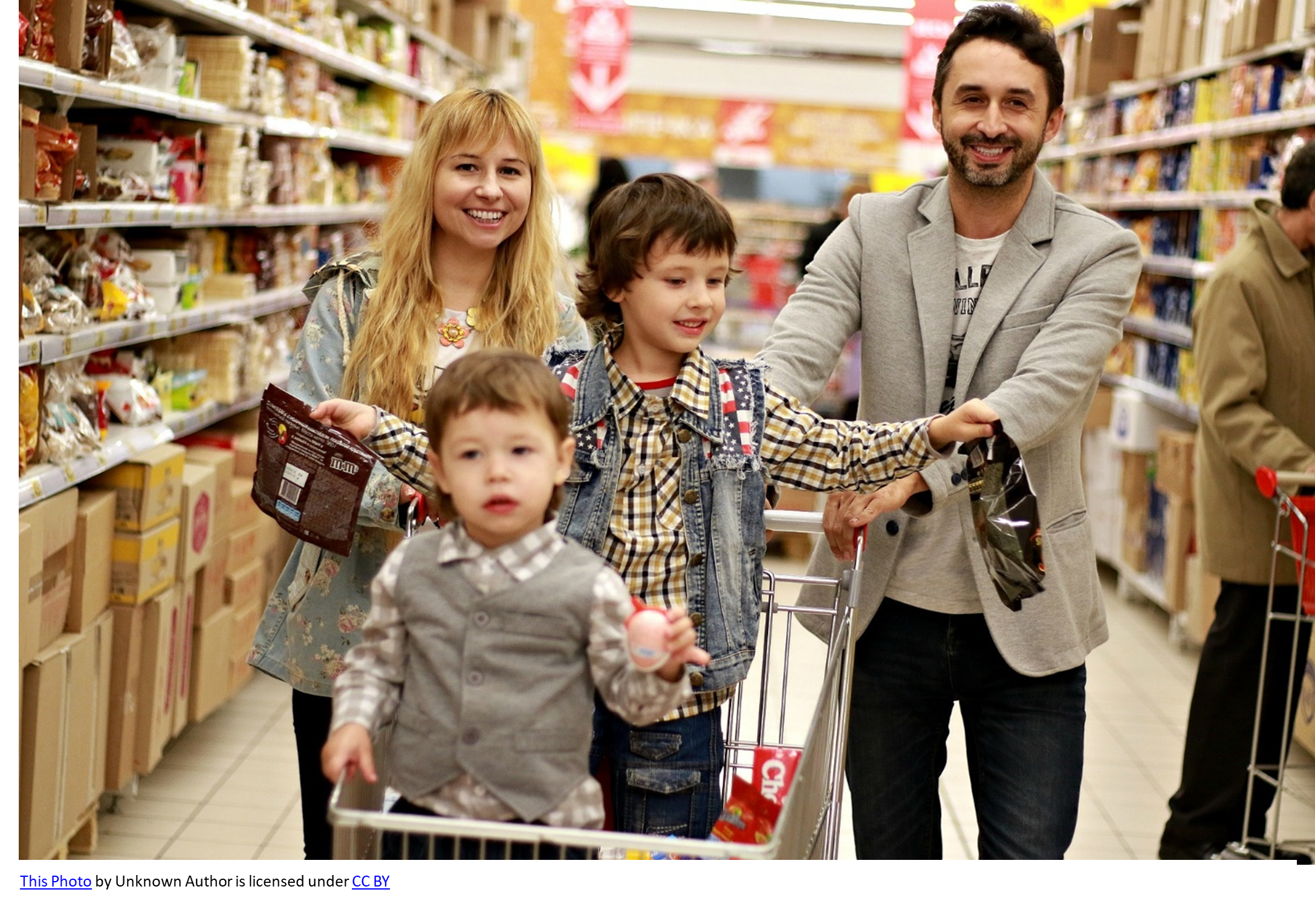
In 2025, a family of four with an income of $4160 a month or less can get this help. Go to the website of the Food Bank of Iowa to see the general income eligibility guidelines. (The income guidelines change on Oct. 1 every year. If a person is not eligible in one year, she could be eligible the next year.)
English
Spanish [Click on the button that says English at the top of the page.]
The SNAP program does require people to have a job, or be looking for work, to get food help. But this requirement does not apply to people who care for children under age 6. Click below for more information.
English
Spanish
SNAP is for U.S. citizens. Parents who are not citizens may apply for SNAP for their children who were born in the U.S. Certain kinds of adult legal residents may be eligible also. For more information:
English
Spanish
How to Apply
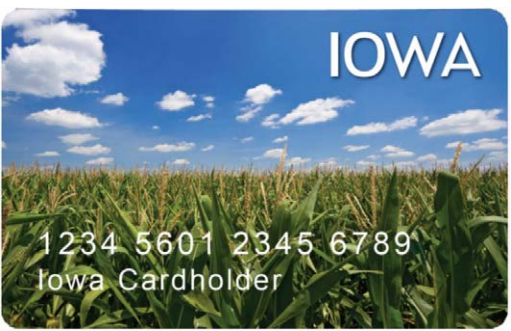
A person can apply for SNAP in three ways: online, over the phone, or by mailing in a paper application.
- Apply for SNAP online.
English
Spanish - Call (855) 944-3663 to apply over the phone. Calls are taken 8 a.m. to 5 p.m. Monday through Friday, except major holidays. OR
- Print out the SNAP application. This will take some time—the application is 16 pages long. Don’t have a printer? Documents can be printed at most libraries for 15 cents a page. Remember to follow all instructions on the first page of the application.
English
Spanish
People can e-mail their questions about SNAP to the Food Bank of Iowa.
Why It's Important
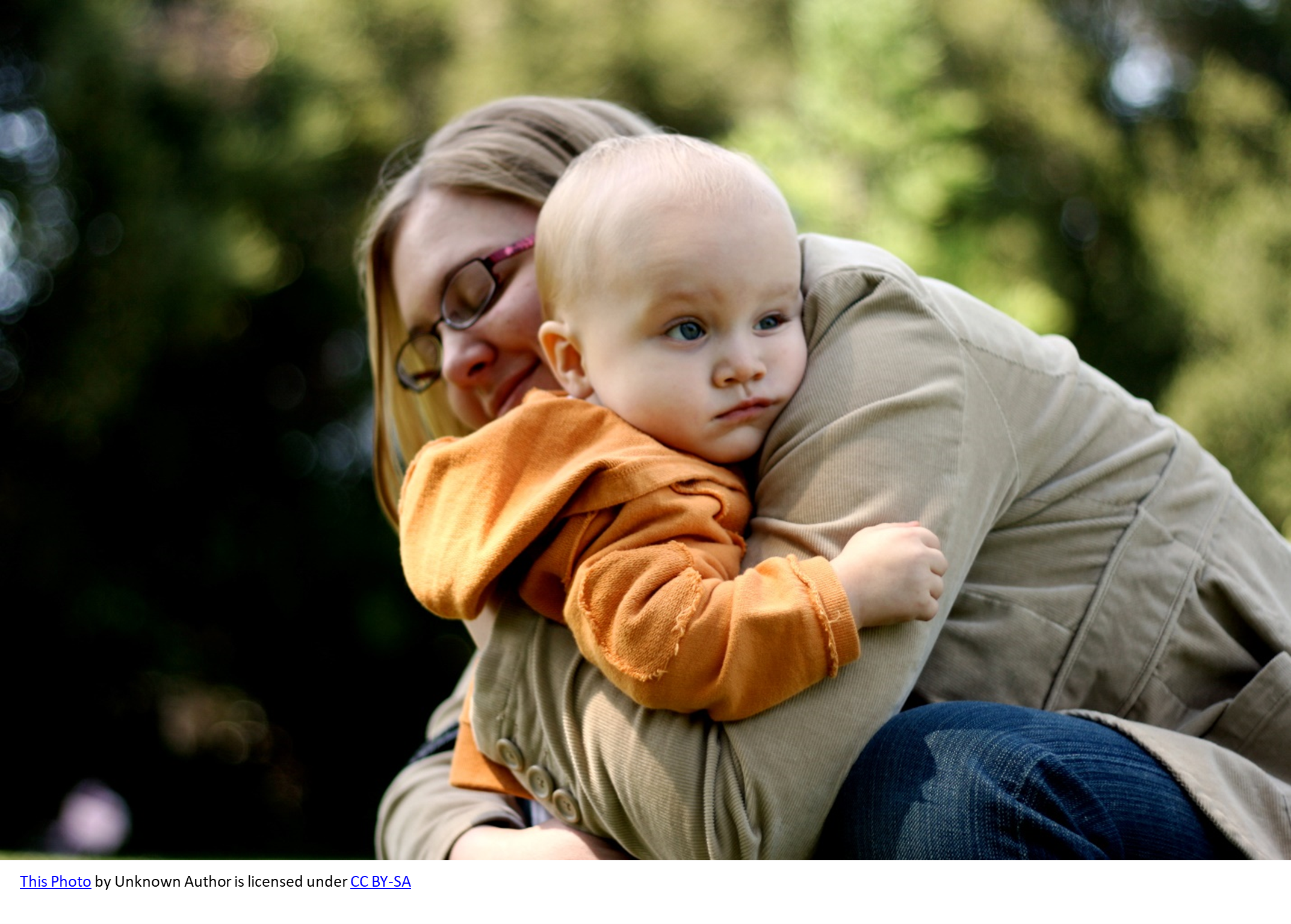
A parent who might qualify for SNAP owes it to her children to apply for it. Especially during the first five years of life, children need good nutrition for brain development. Parents need healthy food to have the energy to be good parents. SNAP is a community investment in the health of our families. This program is also an important financial support to grocery stores and farmers. Using SNAP helps the local economy! It reduces medical costs, too. People who can eat enough healthy food are less likely to get sick.
To learn more about how SNAP works, see this video.
English
Spanish
Double-Up Bucks! More Fruits & Vegetables
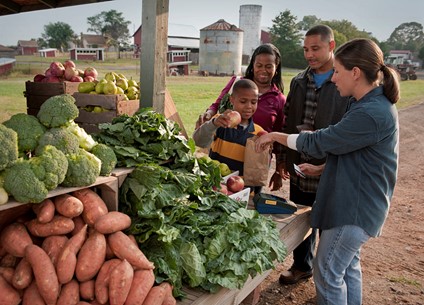
When buying fruits and vegetables with a SNAP EBT card, certain farmers’ markets and Fareway grocery stores will give you more for the money. With the Double-Up Bucks Food program, the EBT card buys two pounds of produce for the price of one! This program can get you up to $10 worth of extra fruits and vegetables at one time. See this video about Double Up Bucks:
Polk County Locations
for Double Up Bucks
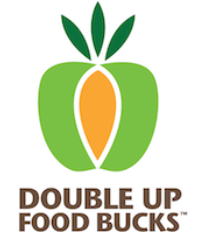
Beaverdale Farmers Market, 4801 Franklin Avenue, Des Moines IA 50310
Downtown Farmers’ Market, 300 Court Avenue, Des Moines IA 50309
Fareway, 329 Grand Avenue, West Des Moines IA 50265
Fareway, 4313 Fleur Drive, Des Moines IA 50321
Fareway, 100 Euclid Avenue, Des Moines IA 50313
Global Greens Market, 3116 University Ave., Des Moines IA 50311
Double Up Food Bucks is a project of the Iowa Healthiest State Initiative. To find out more, go to:
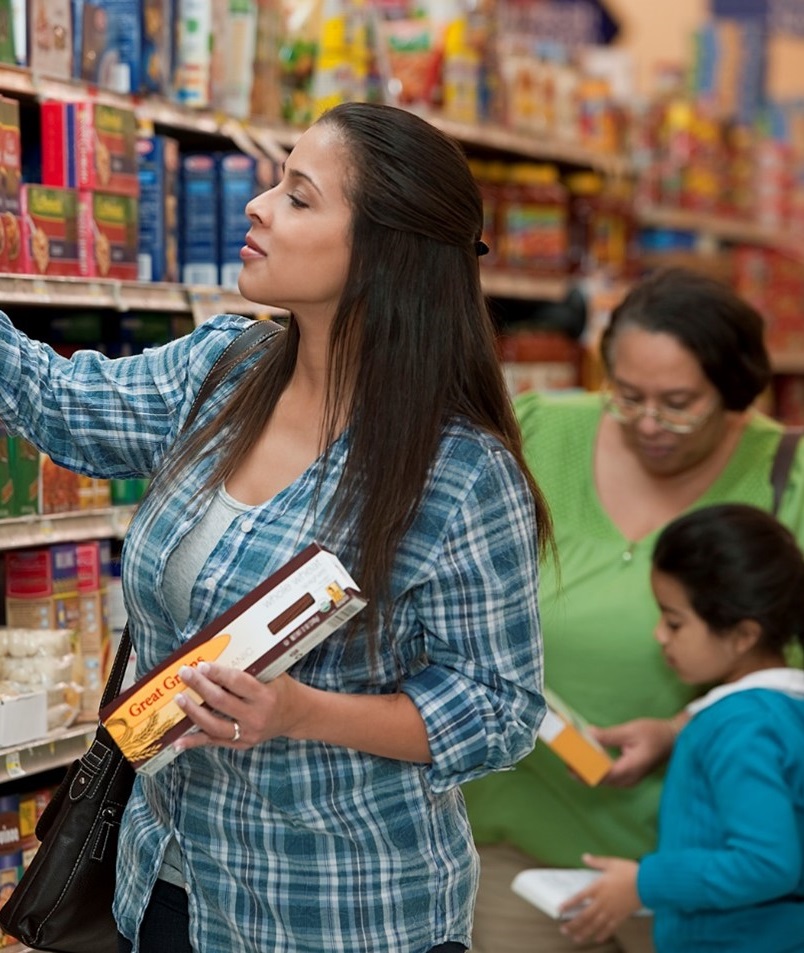
About WIC
This video about WIC comes from California, but it explains how WIC Programs work in all states:
English
Spanish
The WIC program is for infants, children under the age of 5, and pregnant, postpartum, and breastfeeding women. As with SNAP, food money is transferred to a purchase card. Unlike SNAP, though, the e-WIC card can buy only certain brands of especially healthy foods: milk or yogurt, infant formula, baby food, eggs, canned tuna or salmon, cereal, fruits and vegetables, and beans or peanut butter.
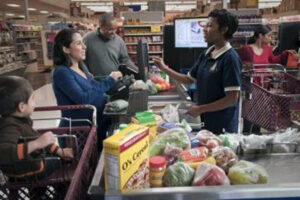
See the list of approved WIC Foods here:
English
Spanish
For one child, WIC provides about $50 a month worth of food. For an infant taking formula, Iowa WIC currently provides 24-30 ounces of Similac Advance formula a day—this can be worth more than $130 a month!
Who is Eligible?
It’s easier to get WIC than it is to qualify for SNAP. The family income can be higher. The annual income of a family of four could be as high as $57,720. To see the WIC income eligibility table, go to this webpage of the Iowa Food Bank:
English
Spanish
Anybody who has a Medicaid card or a SNAP EBT card is eligible for WIC. They can use these cards as proof of income.
Non-citizens are welcome to apply! A person’s immigration status does not matter. WIC does not collect information about immigration or citizenship.
How to Apply

Apply for WIC in Polk County online.
(The online WIC application forms can be translated to any language.)
By filling out the application form online, people can choose an appointment at any one of the five WIC clinics in Polk County. Parents need to submit proof of income, address, and identity. Click here for the list of documents that can be used.
The person who is being enrolled needs to be present at the enrollment or “certification” appointment. The clinic staff needs to check the mother’s or the child’s height, weight, and blood iron level, or else get this information from the family’s doctor.
Why It's Important

This Photo by Unknown Author is licensed under CC BY-NC-ND
More than 113,000 mothers and children in Iowa are eligible for the WIC Program. Unfortunately, only about 52% participate. Why is that? For some parents, it’s hard to get time off work for WIC appointments. Some lack transportation to their nearest WIC clinic. Many do not know they are eligible.
Many parents stop participation in WIC once they no longer need formula. In a recent study, these parents said they felt they should stop WIC participation as soon as possible, to “provide food for others who are really in need.”
When an eligible family decides not to enroll in WIC, or stops participating while they are still income eligible, NOBODY benefits. The government gives WIC clinics funding to serve the estimated number of eligible families. When fewer parents apply to the program, the government just reduces the program’s funding. Eligible families then have less money for food, grocery stores lose sales, farmers lose buyers, and WIC clinics may close.
Many parents believe they can buy enough food without WIC help. But why turn down the chance to save up to $600 a year on food for a child? The money WIC saves a family can go toward all the other things that help children thrive: clothes, childcare, books, and toys. Helping their child to succeed is the most responsible thing parents can do.
Good News about WIC!

- Good customer service
Parents often fear that a WIC clinic visit will take many hours, or that clinic staff will be rude to them. Most WIC clinics these days take pride in welcoming families. The Polk Dallas WIC program, for example, earned a 4.2 out of 5 rating on Google. Recent reviews:”Everyone was super friendly, and the new waiting room was very nice!”“Helpful, very detailed on giving information, I love the amount of time it took for us to get seen, which was 9 mins, maybe a little less. Customer service friendly and approved the same day. I am Happy”
- Easier to use in the store
In the past, parents sometimes had problems finding WIC-approved brands in the store. This is now easier to do! WIC offers a free “shopper app” for your smart phone. People just have to snap a photo of the bar code on a product to see if they can buy it with their WIC card. To find out more, go to
English
Spanish - More fruits and vegetables!
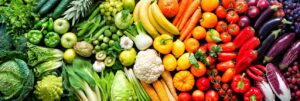
As of Oct. 1, 2023, the monthly dollar value of fruits and vegetables that can be bought with the e-WIC card has gone up dramatically: $26 for children, $47 for pregnant and postpartum women, and $52 for fully and partially breastfeeding women.
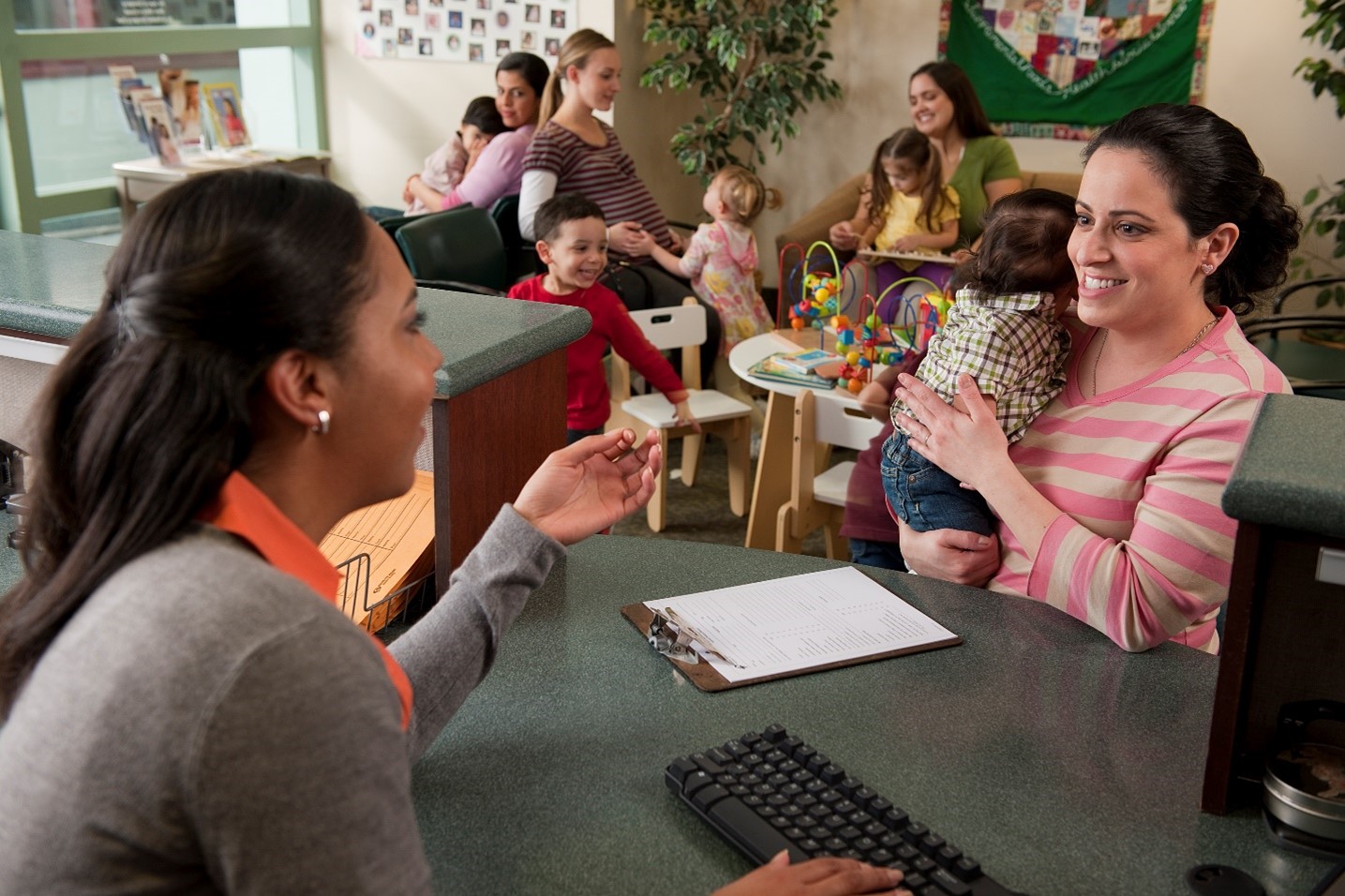
Nutrition counseling in a WIC clinic.
Free and Reduced School Lunch Program
The School Lunch program saves time and money for eligible families by providing free and low-cost lunches for their children in school. U.S. schools started providing meals for students in 1946, when it was discovered that hunger was preventing children from succeeding in school. Families with children can save $11 to $39 per month per child, or $132 to $468 per year, on groceries for their children who participate in the School Lunch Program.
These videos explain more about the National School Lunch Program:
English
Spanish
Who is Eligible?
For the 2024-25 school year, all children in Des Moines public schools, regardless of income, will have school lunches free of charge. No application necessary.
For children in other schools in Polk County, both public and private, their parents need to apply for the free and reduced lunch program. A child from a family of four whose parents earn up to $40,560 qualifies for free lunches every school day. A child from a family of four whose parents earn up to $57,720 qualifies for a reduced-price lunch. Check here to see the income eligibility table for free and reduced lunches. This website can be translated to any language by clicking on “Translate” at the top right.
Non-citizens are welcome to apply for this program.
How to Apply
Parents can visit the website of their children’s school to download an application or to apply online. They can also visit the school in person to ask for an application. Schools put lunch menus on their websites, so that parents can see what is being served to their children.
Summer Food Service
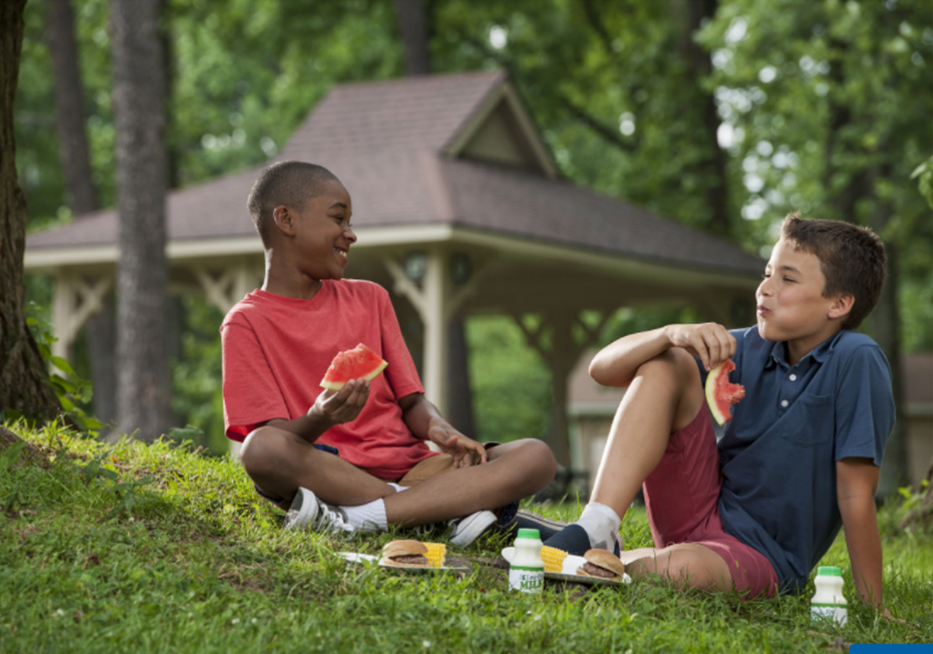
When the school year ends and the school lunches stop, families can still get free lunches for their children through the Summer Food Service Program. This program is for any child aged 18 years or younger. There is no need to fill out applications or present an I.D. Even children too young to attend school are welcome to come. School districts sponsor summer lunches in the schools or else in community parks or apartment courtyards. In the summer of 2023, the Des Moines Public Schools set up lunch service in 29 different sites.
Parents can find summer food programs in their communities by contacting their school district, searching their school district’s website, or calling 211. Or they can go to the USDA Summer Meals For Kids Site Finder to find directions to nearby meal sites, their hours of operation, and contact information. Summer meal programs usually operate every weekday from early June to mid-August.
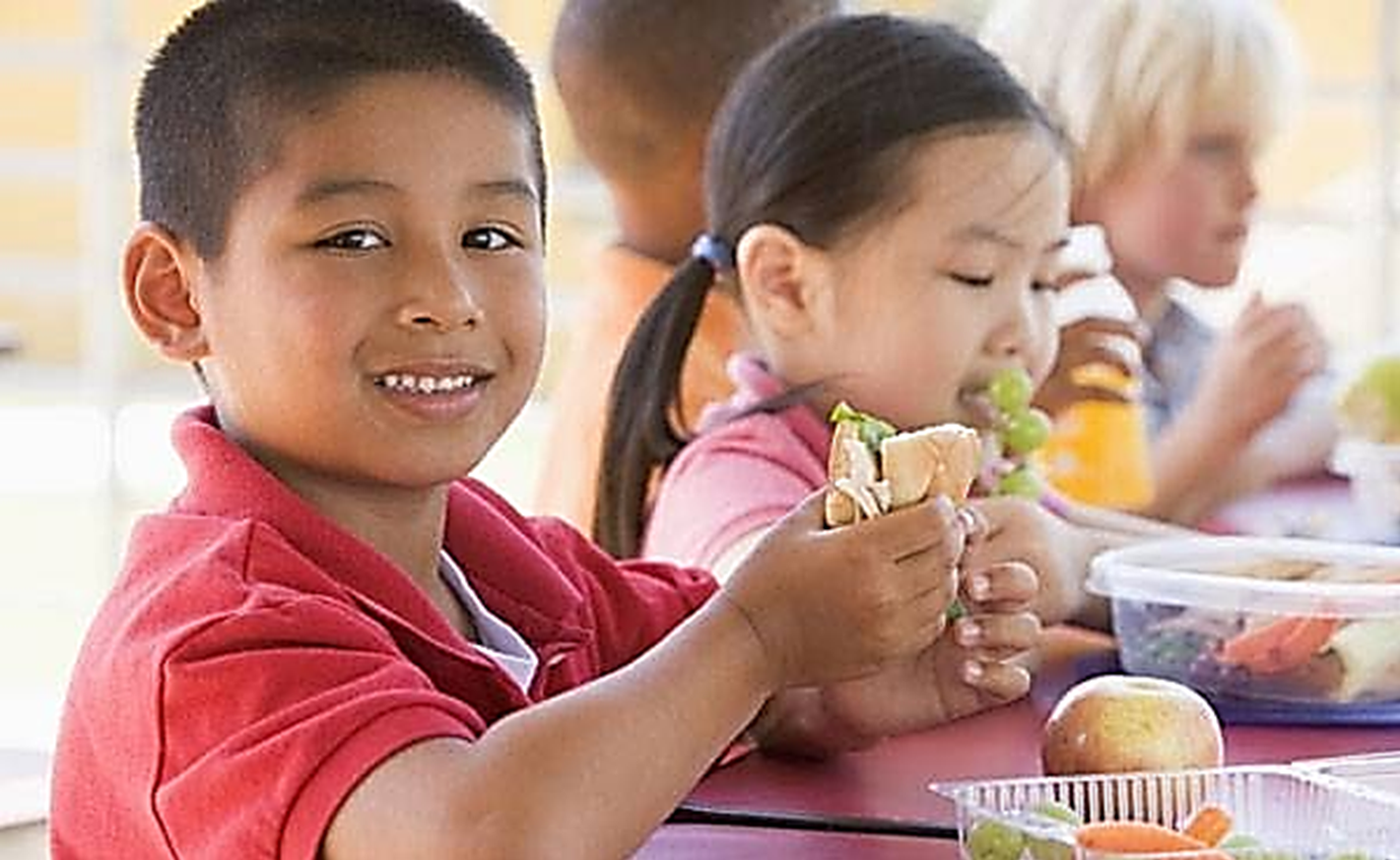
This Photo by Unknown Author is licensed under CC BY-SA
Community Food Pantries
About 14 Community Food Pantries operate in Polk County. They can provide a family with enough free groceries to make meals for three days, once a month. To locate a pantry near you, go to the DMARC (Des Moines Area Religious Council) Find a Pantry page, or call 515-277-6969. Clients can also call 1-833-DMARC-20 (1-833-362-7220) toll free. This number is staffed by trained volunteers and staff from 9 am to Noon, Monday through Friday.
The United Way 211 website is another way to find food pantries near you. Go to https://search.ne211.org/ and type in the search box. Of course, you can simply call 211. The 211 operators can handle calls in Spanish and other languages
Find out about your local food pantry before your food is completely gone. Some pantries are open five days a week from 9 am to 5 pm. Others open only a few days for limited hours. Always call ahead, to make sure the hours haven’t changed.
Meal Programs
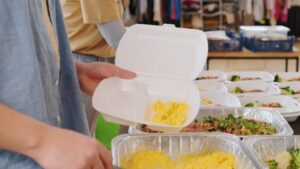
Families can eat free hot meals at a few churches and community centers in the Des Moines area. For example, at CFUM (Children and Families Urban Movement), families can join the “Supper Club.” Supper is served from 4 pm to 5 pm Monday through Friday. Volunteers from many local churches supply and prepare the food. Meal programs like this can be a help to parents who don’t always have the time and money to prepare meals every day. (To find out more about the Supper Club, click here. (Click on the “Translate website” button for Spanish.)
To look for meal programs in your neighborhood, go to these 211.org pages:
English
Spanish
Of course, you can simply call 211. Local operators are available 24 hours a day, seven days a week.
Community Fridges
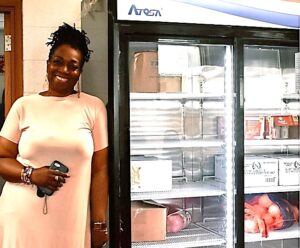
A community fridge is a refrigerator in a public place that is kept stocked with free food. It’s a way to bring food to the places where people already are. In Polk County, these refrigerators can be found at public libraries, such the Altoona Library and the Franklin Avenue Library, and in apartment complexes, such as the Deer Ridge or Hill Top Apartments. To find out more about community fridges, visit the website of Eat Greater Des Moines.
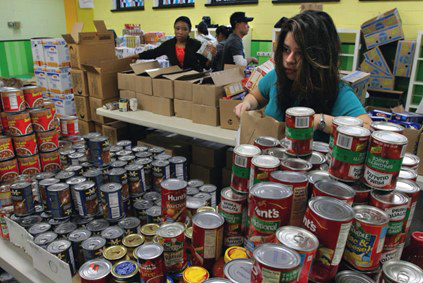
This Photo by Unknown Author is licensed under CC BY-SA
Buy. Eat. Live Healthy Classes
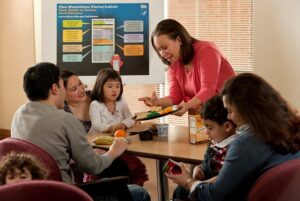
Focus on managing your food dollar by taking a free nutrition course! In Polk County, parents can sign up for the “Buy. Eat. Live Healthy” course at Iowa State University-Extension. In this program, parents gather in groups to learn about budget food shopping, reading food labels, and planning meals. Often, they prepare meals during class!
In Buy. Eat. Live Healthy classes, parents practice the most effective ways to save money on healthy food, including
- Menu planning
- Choosing healthy, quick recipes
- Writing shopping lists
- Using unit pricing
- Cooking vegetable-centered meals
- Avoiding food waste
Parents also have fun in these classes, sharing shopping, cooking tips, and tasting new recipes. People who complete this program save an average of $50 a month on their grocery bill.
To sign up for Buy. Eat. Live Healthy, contact Mae McCarty at mccartym@iastate.edu or (515) 957-5773. (This program is income based. Classes are given in English and Spanish.)
For more information, go to the ISU Extension Polk County website:
English
Spanish
Spend Smart. Eat Smart. Website
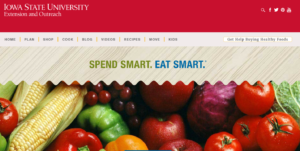
Another way to learn about making low-cost healthy meals is to use “Spend Smart. Eat Smart” (SSES) interactive website from ISU Extension. Here any parent can find instructions on planning, shopping, and cooking, with videos that explain basic food skills. For example, here is a video (in English) on making a slow cooker meal.
The SSES website has 70 easy recipes that university dietitians have tested. Each recipe comes with Nutrition Facts and menu suggestions. These recipes can be downloaded in Spanish too.
Visit Spend Smart. Eat Smart at:
Buy the Cheapest Healthy Foods
Use Low-Cost Healthy Recipes
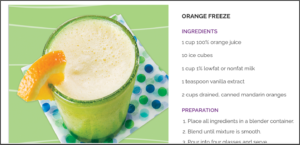
Recipe from CalFresh
The ISU Extension Spend Smart Eat Smart web site has affordable recipes that follow the U.S. Dietary Guidelines. More low-cost healthy recipes can be found at MyPlate.gov and government websites in other states. These recipes have Nutrition Facts, low-cost ingredients, and easy directions. Some have videos showing how the dish is made.
Recipes from MyPlate.Gov
English
Spanish
Use A Shopping List
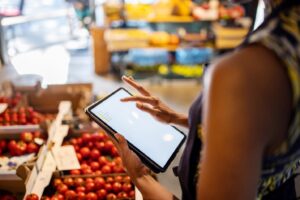
Before going to the grocery store, take an inventory of the foods you already have at home. Then write a list of the other foods needed to make your recipes for the week. A shopping list will:
- Make the shopping trip quicker.
- Prevent impulse purchases.
- Save money!
Use a pre-printed shopping list that arranges your food items in groups, according to where they are in the store. The “Spend Smart. Eat Smart” website has a downloadable shopping list:
English
Spanish
Many people put their shopping list on their phones. This article from Good Housekeeping reviews the different shopping list apps available. Some are free.
English
Spanish
Compare Prices
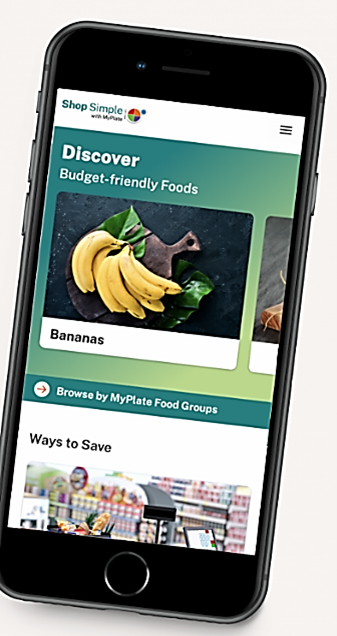
Check the prices of the foods you want to buy before going to the store. Visit the websites of stores to see what is on sale.
Or look through the food ads in newspapers.
Download apps that can help you find the best prices for the foods you want.
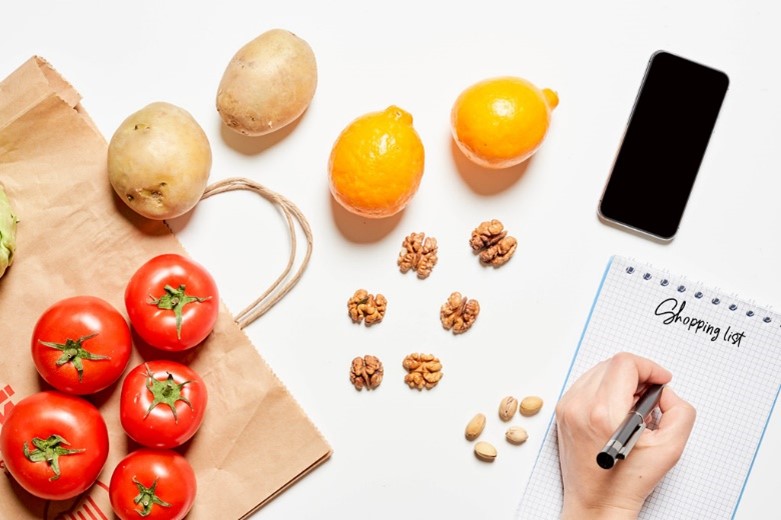
This Photo by Unknown Author is licensed under CC BY-NC-ND

